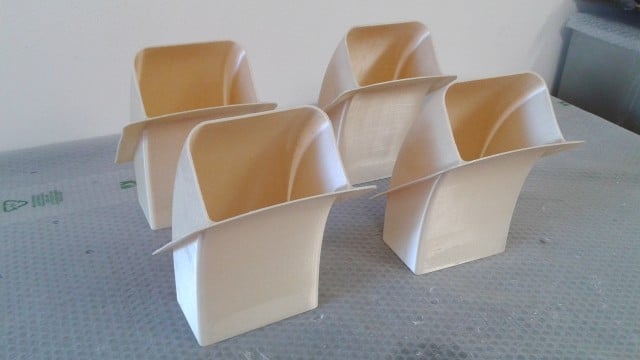
Stratasys recently announced that Zare, a manufacturing service bureau based in Italy, cut its manufacturing costs by 50 percent in the aerospace and automotive industries by implementing a series of Stratasys Fortus 3D production systems.
Having success with the PolyJet and FDM 3D printers for creating prototypes, Zare has now expanded its use of 3D printing into injection molding, tooling and final part production with the Fortus line of printers.
“After a steady decline in traditional manufacturing business, the introduction of Stratasys’s Fortus FDM technology has given us a significant edge over our competition and has enabled us to reduce manufacturing costs for our aerospace and automotive customers by 50 percent. This has been key to revitalizing our direct manufacturing business, as we can quickly produce durable end-use parts for our customers in the final material. We have seen a substantial reduction in iteration costs and turnaround times, and we have reduced the cost per final part by around 30 percent,” said Zare Research and Development Manager, Andrea Pasquali.
Additive manufacturing’s growth beyond prototyping and into direct manufacturing has numerous applications in automotive production as well. Within the automotive and aerospace industries, Stratasys’s 3D printing systems and materials are now responsible for almost 50 percent of Zare’s production.
“For one customer, we tested a 3D-printed prototype of an aerospace pipe that we produced in high performance ULTEM 9085 thermoplastic material. However, with the material’s high strength-to-weight ratio and FST [(flame, smoke and toxicity)] rating, we quickly realized that we could go beyond functional prototype testing and actually manufacture final parts that match the strength of metal. By replacing metal-manufactured parts with high-performance thermoplastics, our customers can meet a vital requirement of aircraft manufacturing by reducing overall weight, while maintaining production quality and adhering to passenger safety requirements. A great example of this is the use of additive manufacturing to directly manufacture lightweight air conditioning ducts for aircraft,” Pasquali said.
Additive manufacturing’s growth beyond prototyping and into direct manufacturing has numerous applications in automotive production as well. Within the automotive and aerospace industries, Stratasys’s 3D printing systems and materials are now responsible for almost 50 percent of Zare’s production.
Read more at ENGINEERING.com

